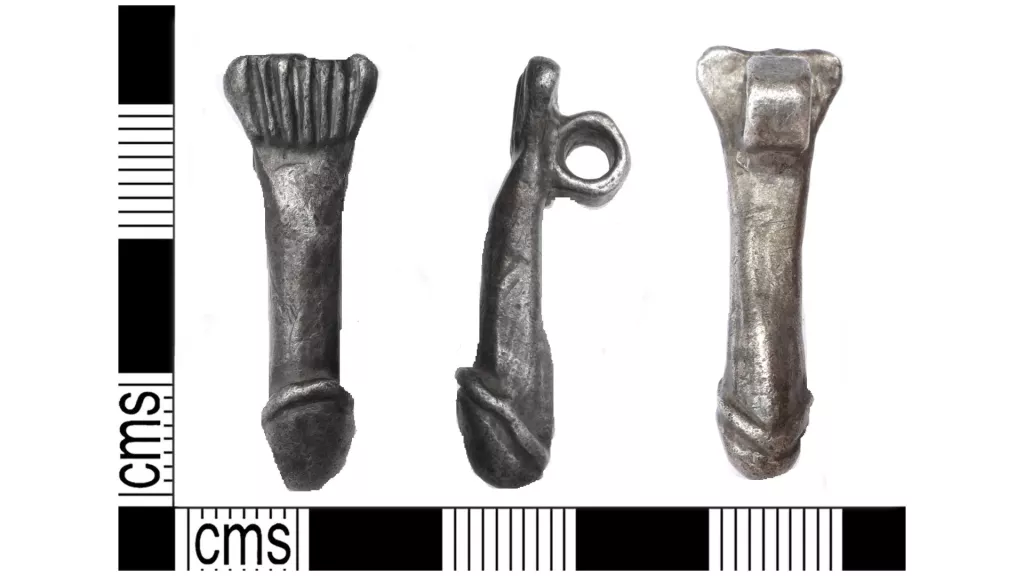Metal detectorist unearths 2,000-year-old penis pendant
A metal detectorist recently discovered a silver, penis-shaped pendant in Kent, England that was likely worn around the neck to protect a person from misfortune around 1,800 years ago.

Ancient Roman writers such as Marcus Terentius Varro (lived 116 B.C. to 27 B.C.) and Pliny the Elder (A.D. 23 to 79) mention how the phallus and representations of it are thought to have had the power to protect a person from evil.
Many depictions of the phallus have been found throughout the Roman Empire and scholars often believe that they were created to avoid bad luck.
The pendant (also called an amulet) is about 1.2 inches (3.1 centimetres) long, with a tiny ring at the top for a string (necklace) to go through. It dates back to a time when the Romans controlled England, between A.D. 42 and 410.
While such amulets in the shape of a penis were frequently seen throughout Roman Britain, they are typically made of copper-alloy rather than silver like the one from Kent, Lori Rogerson, a finds liaison officer with the Portable Antiquities Scheme (PAS), wrote in a report(opens in new tab) on the artefact.
“Being a higher-quality metal than copper-alloy, silver may have been thought to strengthen the phallus’ protective abilities,” Rogerson told Live Science in an email.
“We know that children were protected by these apotropaic [having the power to stop evil] devices, and the archaeological evidence suggests their use in Britain was very popular within the Roman army.”
Roman men, women, children and even animals wore pendants like this, in an effort to ward off the so-called evil eye, said Cyril Dumas, a scholar at Musée Yves Brayer who has researched and written about these artefacts. “This amulet is against the effects of ‘the evil eye,’ a personification of bad luck,” Dumas told Live Science in an email.
As for the choice of metal, perhaps the person who commissioned or bought the piece of jewellery had enough money for a higher-quality metal.
“The choice of silver as a material can be for many reasons, one of which is simply because the wearer could afford it and the pendant then also becomes an object of display,” Rob Collins a project manager and research coordinator at Newcastle University’s School of History, Classics and Archaeology, told Live Science in an email.
“However, I suspect that silver also has magical properties or affiliations associated with it as a material,” added Collins, who has studied and written about artefacts like this one.

Metal detectorist Wendy Thompson found the amulet on Dec. 31, 2020, and she reported her to find to the Portable Antiquities Scheme, a program run by the British Museum and National Museum Wales that tracks finds made by metal detectorists.
The artefact is now going through the treasure process required by U.K. law, which may result in it entering a museum collection in Britain.





